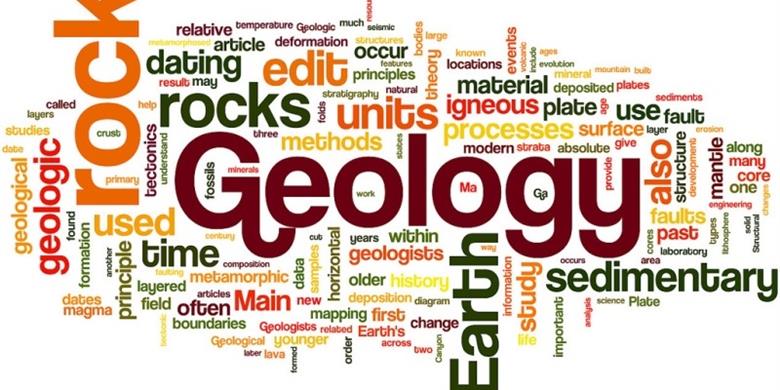Rocks! See below for books, projects, experiments, arts and crafts, and much more.Celebrate National Fossil Day, make eggshell geodes, take a nature walk with alphabet rocks, grow gorgeous crystals, play the ancient Asian game of Five Stones and build your own catapult.
And don’t miss Earth Science Week, which is celebrated each year in October. Check out the website (see below) for ideas, activities, research projects, a photo gallery, and a state-by-state list of Earth Science organizations.
Table of Contents
About Rocks and Minerals
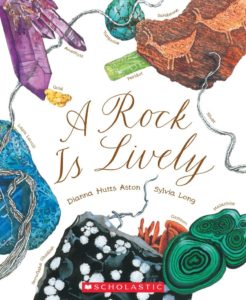
|
By Dianna Hutts Aston, A Rock is Lively (Chronicle Books, 2012) is a beautifully designed and illustrated introduction to the world of rocks, feature by feature, in the same format as Aston’s previous nature picture books, among them An Egg is Quiet and A Seed is Sleepy. For ages 4-8. |
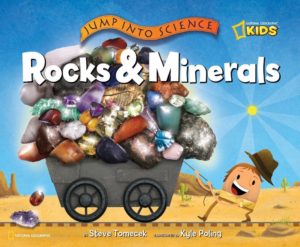
|
Steve Tomacek’s Rocks and Minerals (National Geographic Children’s Books, 2010) in the Jump Into Science series is a colorful introduction to rocks covering the formation of the planet, the building blocks of rocks, and uses of rocks. Included is a project for making a rock of your own (using sand, pebbles, and white glue). For ages 4-8. |
| In the same series, see Tomacek’s Dirt (2007), which includes a soil stratification project, and Ellen Prager’s Sand (2006). | |
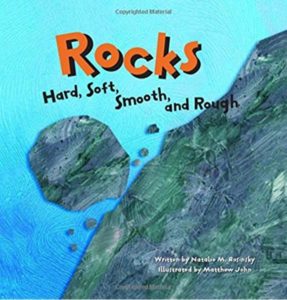
|
Natalie M. Rosinsky’s Rocks: Hard, Soft, Smooth, and Rough (Picture Window Books, 2002) is a simple introduction to igneous, sedimentary, and metamorphic rocks. Included are a rock identification chart and an explanation of the Mohs Hardness Scale. For ages 5-8. |
| The Mohs Hardness Scale was invented in 1812 by German mineralogist Frederich Mohs. This website explains the scale (in ten easy steps, from talc to diamond) and shows how a number of common items (fingernails, a penny) fall into place. | |
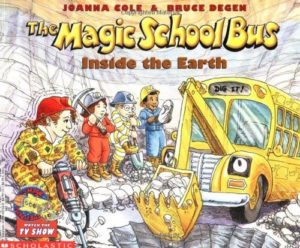
|
In Joanna Cole’s The Magic School Bus Inside the Earth (Scholastic, 1989), the incomparable Ms. Frizzle – in hard hat and rock-patterned jumpsuit – takes her class on a journey to the center of the earth. (They return to the surface via volcanic eruption.) Information about rock layers and rocks is delivered through cartoon bubbles and hand-lettered student reports. For ages 6-11. |
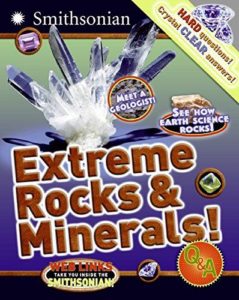
|
Melissa Stewart’s Extreme Rocks and Minerals (HarperCollins, 2007) combines gorgeous color photos with a reader-friendly question-and-answer format. Sample questions: “What is a mineral?” “What is a rock?” “How do you identify sedimentary rocks?” “How are rocks recycled?” Included are links to relevant Smithsonian websites. For ages 6-11. |
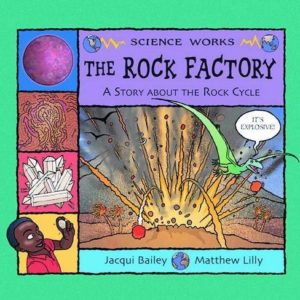
|
Jacqui Bailey’s The Rock Factory (Picture Window Books, 2007) tells the story of the rock cycle through the adventures of one rock, born in the depths of a volcano. For ages 7-10. |
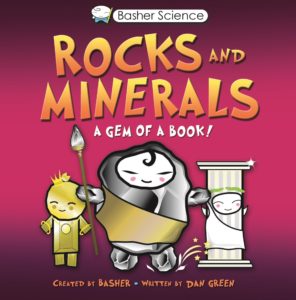
|
By Simon Basher and Dan Green, Rocks and Minerals (Kingfisher, 2009) covers the three rock types, ores, minerals, gems, and fossils in a fact-filled breezy text, giving each feature a first-person voice. Clay, for example, states, “I’m the type of mushy goo that can suck rain boots off your feet. My main ingredients are tiny particles that you can’t see unless you use an electron microscope.” Shale announces, “My experiences in becoming a rock have been brutal.” Illustrated with great little cartoon icons. One of an extensive science series, all good. For ages 8 and up. |
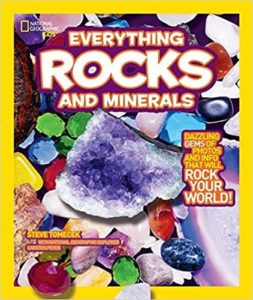
|
Steve Tomacek’s reader-friendly National Geographic Kids: Everything Rocks and Minerals variously covers different types of rocks, uses of rocks (arrowheads, coal, the Taj Mahal), the rock cycle, gemstones, and rock collecting. Illustrated with gorgeous color photographs. An appealing read for ages 8-12. |
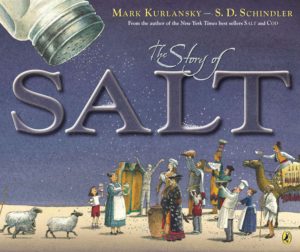
|
Mark Kurlansky’s The Story of Salt (Putnam Juvenile Books, 2006) is a picture-book history covering all aspects of salt. Fascinating for ages 8-12. (For teenagers and adults, see Kurlansky’s much longer Salt: A World History (Penguin Books, 2003).) |
| Salt is the only mineral we eat. Learn more about sea salt, salt beds, salt domes, and more at About Salt. Included is a link to a site with instructions for making your own salt crystals. | |
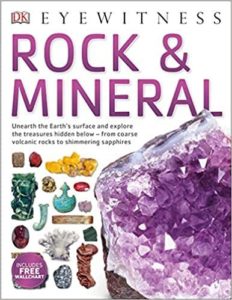
|
In the Eyewitness series, Rocks & Minerals (Dorling Kindersley, 2008) by R.F. Symes covers rock formation, weathering and erosion, the three basic kinds of rocks, fossils, gemstones, minerals, and precious metals, with separate sections devoted to limestone caves, rocks as tools, coal, rocks from space, and rock collecting. Each topic has a double-page spread, illustrated with spectacular photos and diagrams. The bulk of the text is in picture captions. For ages 8 and up. |
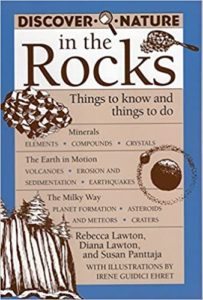
|
By Rebecca Lawton, Diana Lawton, and Susan Panttaja, Discover Nature in the Rocks (Stackpole Books, 1997) is a family-friendly 200+-page survey of general geology, covering minerals, rocks, volcanoes, sediment, fossils, erosion, water, continents and tectonic plates, earthquakes, and rocks in space. Each chapter includes several activities (model sedimentary layers in a glass jar, bake a batch of volcano tarts, make a Pangaea puzzle), an interesting selection of further “Things to Think About,” and helpful book and video lists. |
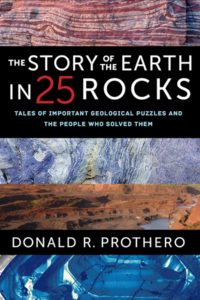
|
In Donald R. Prothero’s The Story of the Earth in 25 Rocks (Columbia University Press, 2018), chapters include “Volcanic Tuff: Vulcan’s Wrath: The Eruption of Vesuvius,” “Coal: The Rock That Burns Fires the Industrial Revolution;” and “Moon Rocks: Green Cheese or Anorthosite? The Origin of the Moon.” An absorbing read for teens and adults. |
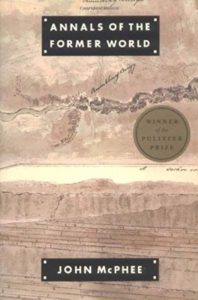
|
By famed nonfiction writer John McPhee, Annals of the Former World (Farrar, Straus & Giroux, 2000) is a fascinating geologic overview of the United States, based on a series of cross-country trips McPhee took in company with various geologists. Portions of the trip were published as separate earlier books (Basin and Range, In Suspect Terrain, Rising From the Plains, Assembling California); Annals of the Former World includes them all, plus. Winner of the Pulitzer Prize. Highly recommended for interested teenagers and adults. |
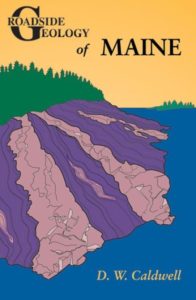
|
The Roadside Geology series (Mountain Press) has a volume for each state, detailing geological history and key features. Fun to keep in the car. |
| At OneGeology, kids click on a cute little character to learn about geology, maps, rocks and minerals, fossils and dinosaurs, earthquakes, volcanoes, worldwide geology, energy, water, and earth processes. Each character’s page has kid-friendly information, interactive diagrams, video clips, photos, and a short quiz. | |
| Rock Hound Kids (“Helping Kids to Love Geology”) has a mineral photo gallery, interactive graphics on geology basics, an online rock game (“Who Am I?”), and resource lists for parents and teachers. | |
| The Smithsonian’s Department of Mineral Sciences has a wealth of resources, among them the incredible Dynamic Earth map (track earthquakes, volcanoes, impact craters, and plate boundaries) and the Global Volcanism Program (“10,000 years of volcanic activity at your fingertips”). Visitors can also check out (wonderful) ongoing exhibits, and learn about the Hope Diamond and the search for Antarctic meteorites. | |
| Got a question about rocks, minerals, volcanoes, earthquakes, mountains, maps, rivers, or any other geological topic? Go to Ask-a-Geologist. |
